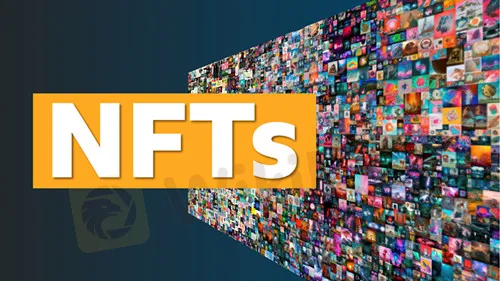简体中文
繁體中文
English
Pусский
日本語
ภาษาไทย
Tiếng Việt
Bahasa Indonesia
Español
हिन्दी
Filippiiniläinen
Français
Deutsch
Português
Türkçe
한국어
العربية
NFTs, Art Or Just The Latest Cryptocurrency Bubble?
Abstract:You’ve probably seen the news: Tweets, memes, and digital art are selling for ‘millions’ in a growing cryptocurrency trend called non-fungible tokens (NFTs).
You‘ve probably seen the news: Tweets, memes, and digital art are selling for ’millions in a growing cryptocurrency trend called non-fungible tokens (NFTs).
NFTs, a blockchain technology that assigns a unique ID to products that would otherwise be easy to replicate, are being touted as the future of art and collecting because they establish verifiable ownership in the digital domain.

Its being likened to the sports card collecting craze of the 1990s.
Except now, there are platforms selling basketball clips you could easily watch on YouTube. The difference between the two, however, is startups are putting a line of code on those clips that tells everyone its yours.
But what‘s escaped the headlines is that many of the highest-profile deals – ’$3.8 million for the first-ever tweet, for example – are being funded by digital currency investors themselves and paid for in cryptocurrencies like Ethereum, not dollars.
Ethereum is a blockchain currency similar to Bitcoin, but it also supports uniquely identifiable (non-fungible) tokens like artwork or video clips being traded.
It isnt the only blockchain supporting NFTs, but it is quite popular and frequently used by prominent online marketplaces selling these tokens.
Buying an NFT doesn‘t mean other people can’t copy the art and share it around anyway, and it doesnt confer any legal copyright or reproduction rights.
You‘re basically buying cryptocurrency with a display picture that’s only been printed a limited number of times, or sometimes just once (like Jacks tweet).
NFTs: Another cryptocurrency bubble?That explains the popularity among people with lots of cryptocurrency lying around.
And while there‘s nothing necessarily illegal about bidding up your own stock, financial experts warn would-be investors it’s best to proceed with caution.
“People are investing in NFTs for a quick win, but not everyone is thinking about the consequences,” Scott Farmer, a financial planner with Bravium, told TND.
“There‘s FOMO [fear of missing out] driving people to invest in products they don’t fully understand.”
The difficulty here is that while NFTs create scarcity in digital assets by establishing a form of ownership, theres little transparency about the buyers.
Although some have outed themselves, including first tweet purchaser Sina Estavi – a Malaysian entrepreneur who owns cryptocurrency exchange “Cryptoland” – others spending big on platforms like NiftyGateway arent named.
It means we dont know whether the people buying artwork from Grimes and other artists are benefitting financially from the subsequent media headlines.
In some cases, NFTs are pegged to digital currencies themselves, as was the case with a high-profile art deal last week worth ‘$US69 million ($90 million)’, which The Washington Post found may have delivered a windfall for the buyer.
But investors like Mr Estavi insist they‘re paying for slices of history, ushering in a new digital-first asset class that’s moved art collecting into the 21st century.
Daniel Schlagwein, an associate professor in finance at the University of Sydney‘s Business School, agreed there’s something deeper than asset bubbles at play.
“Investors having a financial stake in this kind of product doesn‘t mean they’re wrong – it just means theyve got skin in the game,” he told The New Daily.
“Bitcoin has been called a bubble since 2011 … that ‘there’s no intrinsic value argument has been wrong in the past.”
NFTs: The future of art?
UTS finance professor David Michayluk said NFTs are creating genuinely new demand for digital art, which in the past could be copied readily.
Thats good news for artists, who are enjoying an entirely new revenue stream.
Take Beeple for instance (the artist who sold the composite image above).
He had never sold a print for more than $100 until last October, and today hes the third-most valuable living artist, according to auction house Christies.
“The only difference now is that we know who owns [digital art],” Professor Michayluk told The New Daily.
“What youre doing is securing ownership beyond any questionable doubt.”
If youre looking to get involved and purchase an NFT, you should be prepared to lose whatever you put in, Professor Michayluk warned.
“To really avoid being burned you have to buy something that‘s from an artist that’s really already well known,” he said.
Disclaimer:
The views in this article only represent the author's personal views, and do not constitute investment advice on this platform. This platform does not guarantee the accuracy, completeness and timeliness of the information in the article, and will not be liable for any loss caused by the use of or reliance on the information in the article.
WikiFX Broker
Latest News
Interactive Brokers Launches Forecast Contracts in Canada for Market Predictions
Authorities Alert: MAS Impersonation Scam Hits Singapore
INFINOX Partners with Acelerador Racing for Porsche Cup Brazil 2025
Billboard Warns of Crypto Scams Using Its Name – Stay Alert!
The Impact of Interest Rate Decisions on the Forex Market
STARTRADER Spreads Kindness Through Ramadan Campaign
How a Housewife Lost RM288,235 in a Facebook Investment Scam
Rising WhatsApp Scams Highlight Need for Stronger User Protections
A Trader’s Worst Mistake: Overlooking Broker Reviews Could Cost You Everything
The Daily Habits of a Profitable Trader
Currency Calculator







